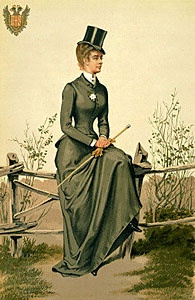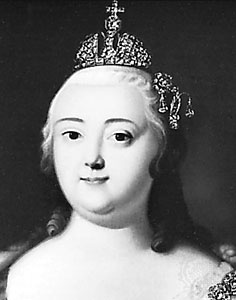Elizabeth
New Jersey, United States
city, seat (1857) of Union county, northeastern New Jersey, U.S. It lies on Newark Bay and Arthur Kill (channel; connected by the Goethals Bridge to Staten Island, New York City) and is adjacent to Newark, New Jersey, to the north. Settlement began in 1664 with the purchase of land from the Delaware Indians. It was named Elizabethtown to honour the wife of Sir George Carteret, one of the colony's first proprietors. The first colonial assembly met there from 1668 to 1682. In 1740 it was chartered as the “free borough and town of Elizabeth.” Elizabeth suffered severely during the American Revolution and was the scene of four military engagements. With the coming of the railroads and the development of the Port of Staten Island in the 1830s, the town was assured steady growth.
Elizabeth is highly industrialized, with important shipping operations including the Port Newark/Elizabeth Marine Terminal, with facilities for containerized shipping. The city was a leading centre for the manufacture of sewing machines from 1873 until the early 1980s, when the Singer (Singer Company) plant closed. Elizabeth's economy is still dominated by manufacturing, including food products, chemicals, and machinery. The city is also an important retail and health-care centre for the region. Princeton University originated (1746) in Elizabeth as the College of New Jersey. Boxwood Hall, now a state historic site, was the home of Elias Boudinot, president of the Continental Congress in 1783. Alexander Hamilton (Hamilton, Alexander) and Aaron Burr (Burr, Aaron) both attended an old academy (burned by the British in 1780) situated where the city's First Presbyterian Church parish house now stands. Part of Newark Liberty International Airport lies within the city. Inc. city, 1855. Pop. (1990) 110,002; (2000) 120,568.
empress consort of Austria
born Dec. 24, 1837, Munich, Bavaria 【Germany】
died Sept. 10, 1898, Geneva, Switz.
 empress consort of Austria from April 24, 1854, when she married the emperor Francis Joseph I. She was also queen of Hungary (crowned June 8, 1867) after the Austro-Hungarian Ausgleich, or Compromise. Her assassination brought her rather unsettled life to a tragic end.
empress consort of Austria from April 24, 1854, when she married the emperor Francis Joseph I. She was also queen of Hungary (crowned June 8, 1867) after the Austro-Hungarian Ausgleich, or Compromise. Her assassination brought her rather unsettled life to a tragic end.Elizabeth was the daughter of the Bavarian duke Maximilian Joseph. In August 1853 she met her cousin Francis Joseph, then aged 23, who quickly fell in love with the 15-year-old Elizabeth, who was regarded as the most beautiful princess in Europe. Soon after their marriage she became involved in many conflicts with her mother-in-law, Archduchess Sophia, which led to an estrangement with the court. Generally popular with her subjects, she offended Viennese aristocracy by her impatience with the rigid etiquette of the court.
The Hungarians admired her, especially for her endeavours in bringing about the Compromise of 1867. She spent much time at Gödöllő, north of Budapest. Her enthusiasm for Hungary, however, affronted German sentiment within Austria. She partly assuaged Austrian feelings by her care for the wounded in the Seven Weeks' War of 1866.
The suicide of her only son, the crown prince Rudolf (Rudolf, Archduke and Crown Prince of Austria), in 1889, was a shock from which Elizabeth never fully recovered. It was during a visit to Switzerland that she was mortally stabbed by an Italian anarchist, Luigi Luccheni.
Additional Reading
Brigitte Hamann, The Reluctant Empress (1986; originally published in German, 1982).
empress of Russia
Russian in full Yelizaveta Petrovna
born Dec. 18 【Dec. 29, New Style】, 1709, Kolomenskoye, near Moscow, Russia
died Dec. 25, 1761, 【Jan. 5, 1762】, St. Petersburg
 empress of Russia from 1741 to 1761 (1762, New Style).
empress of Russia from 1741 to 1761 (1762, New Style).The daughter of Peter I the Great (reigned 1682–1725) and Catherine I (reigned 1725–27), Elizabeth grew up to be a beautiful, charming, intelligent, and vivacious young woman. Despite her talents and popularity, particularly among the guards, she played only a minor political role during the reigns of Peter II (reigned 1727–30) and Empress Anna (reigned 1730–40). But when Anna Leopoldovna assumed the regency for her son Ivan VI (1740–41) and threatened Elizabeth with banishment to a convent, the young princess allowed herself to be influenced by the French ambassador and members of the Russian court who hoped to reduce German domination over Russian affairs and reverse Russia's pro-Austrian, anti-French foreign policy. On the night of Nov. 24–25 (Dec. 5–6), 1741, she staged a coup d'état, arresting the infant emperor, his mother, and their chief advisers; after summoning all the civil and ecclesiastical notables of St. Petersburg, Elizabeth was proclaimed empress of Russia.
Upon ascending the throne, Elizabeth abolished the Cabinet council system of government that had been employed by her predecessors and formally reconstituted the Senate as it had been created by her father. As a result of this and similar measures, her reign has been generally characterized as a return to the principles and traditions of Peter the Great (Peter I). In fact, Elizabeth's restoration of the Senate as the chief governing body was only nominal (the country really being ruled by her private chancery), and the empress actually abolished some of her father's major reforms. Furthermore, rather than assume a dominant role in government as Peter had done, Elizabeth occupied herself with splendid court and church activities and the purchase of stylish Western clothing. She also encouraged the development of education and art, founding Russia's first university (in Moscow) and the Academy of Arts (in St. Petersburg) and building the extravagant Winter Palace (also in St. Petersburg). She left control of most state affairs to her advisers and favourites, under whose leadership the effectiveness of Russia's government was handicapped by continual court intrigues; the country's financial situation deteriorated; and the gentry acquired broad privileges at the expense of the peasantry.
Simultaneously, however, Russia's prestige as a major European power grew. Guided by Aleksey Bestuzhev-Ryumin, who enjoyed Elizabeth's complete confidence, the country firmly adhered to a pro-Austrian, anti-Prussian foreign policy, annexed a portion of southern Finland after fighting a war with Sweden (1741–43), improved its relations with Great Britain, and successfully conducted hostilities against Prussia during the Seven Years' War (1756–63).
Before Russia and its allies, France and Austria, could force Prussia's collapse, however, Elizabeth died, leaving her throne to her nephew Peter III, who was a great admirer of Frederick II the Great of Prussia and who withdrew Russia from the war.
queen consort of United Kingdom
in full Elizabeth Angela Marguerite, née Bowes-Lyon, also called (1923–36) Duchess of York, or (from 1952) Queen Elizabeth, the Queen Mother
born August 4, 1900, St. Paul's Waldenbury, Hitchin, Hertfordshire, England
died March 30, 2002, Windsor, Berkshire
queen consort of the United Kingdom of Great Britain and Ireland (1936–52), wife of King George VI (George VI). She was credited with sustaining the monarchy through numerous crises, including the abdication of Edward VIII and the death of Princess Diana (Diana, princess of Wales).
The Lady Elizabeth Bowes-Lyon was the youngest daughter of Claude George Bowes-Lyon, 14th earl of Strathmore and Kinghorne (d. 1944); the Bowes-Lyon family could claim descent from Robert I the Bruce, king of Scotland. On April 26, 1923, Elizabeth was married to Albert, duke of York, second son of King George V. This marriage was a popular departure from the long-standing practice of an English prince marrying into a foreign royal family. On December 11, 1936, upon the abdication of Edward VIII and the accession of her husband as George VI, Elizabeth became queen consort. She never forgave Edward, afterward duke of Windsor, for having abandoned the throne to George, without the latter's adequate anticipation or preparation. Shy and prone to melancholy, George seemed ill-suited for the role of king. Elizabeth's unflagging support, however, helped transform him into a confident and much respected monarch; it was at her urgings that he sought treatment for stuttering. As queen consort, Elizabeth also enjoyed great popularity, enhanced, in part, by her actions during World War II, when she refused to leave London during German air raids, even after Buckingham Palace was bombed. Many credit her with setting the tone for the modern British monarchy, as she eased formalities and established an unprecedented rapport with the public.
Elizabeth bore two daughters, Elizabeth Alexandra Mary (Elizabeth II), the future queen Elizabeth II (b. April 21, 1926), and Princess Margaret Rose, the future Countess of Snowden (b. August 21, 1930—d. February 9, 2002). After her husband's death on February 6, 1952, and the accession of Elizabeth II, she became known officially as Her Majesty Queen Elizabeth, the Queen Mother. She remained, however, an influential figure and made numerous appearances in England and around the world. Her public duties continued until shortly before her death. Noted for her humour and easygoing nature, the “Queen Mum,” as she became affectionately known, was one of the most popular and admired members of the royal family.
- imperial city
- Imperial College
- Imperial Crown
- imperialism
- imperial preference
- Imperial Tobacco Group, PLC
- Imperial Valley
- Imperial War Museum
- imperium
- impetigo
- Imphal
- implantation
- implication
- Important gemstones
- imposition of hands
- impotence
- Impressionism
- impressment
- imprimatur
- imprinting
- impromptu
- improvisation
- imram
- Imre Bródy
- Imre Kertész